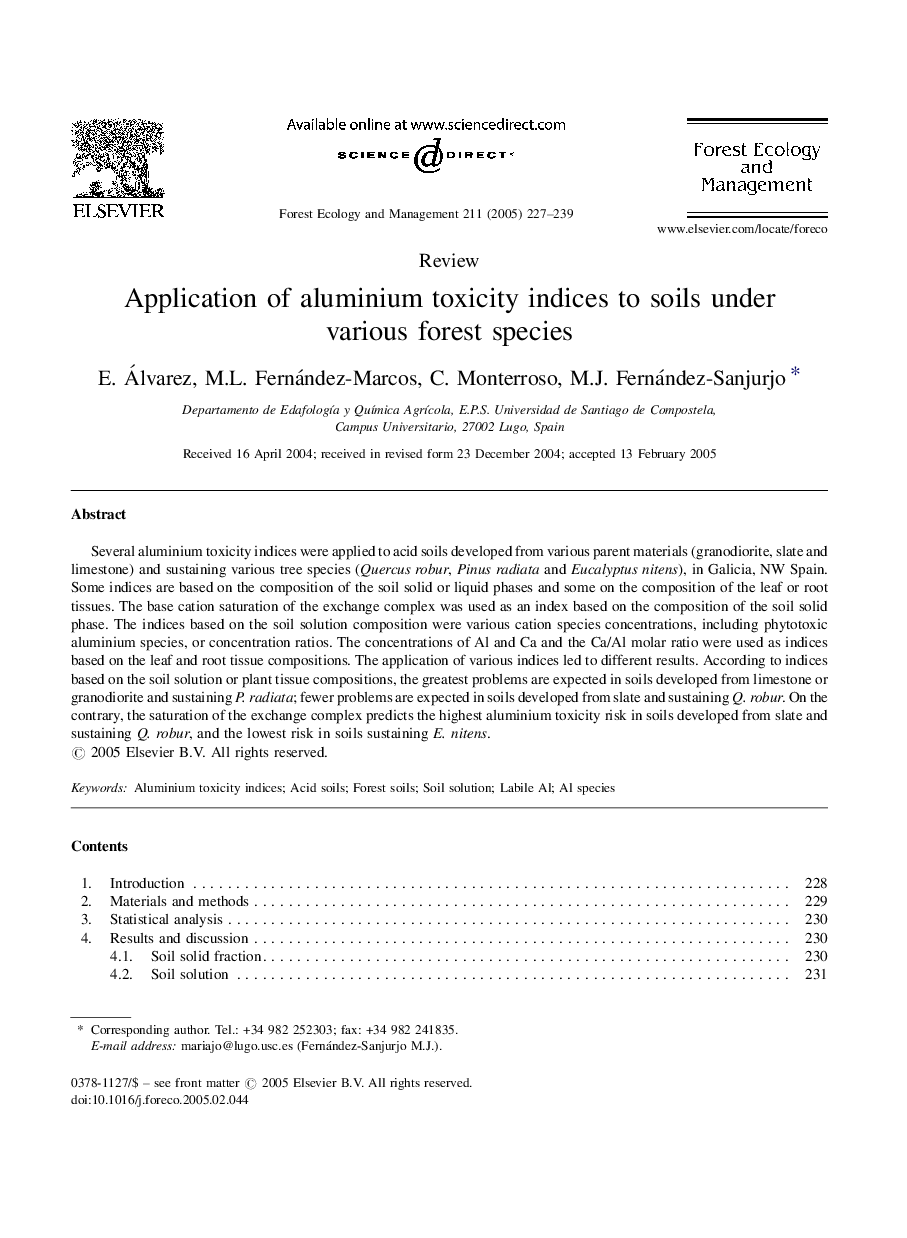| Article ID | Journal | Published Year | Pages | File Type |
|---|---|---|---|---|
| 10250626 | Forest Ecology and Management | 2005 | 13 Pages |
Abstract
Several aluminium toxicity indices were applied to acid soils developed from various parent materials (granodiorite, slate and limestone) and sustaining various tree species (Quercus robur, Pinus radiata and Eucalyptus nitens), in Galicia, NW Spain. Some indices are based on the composition of the soil solid or liquid phases and some on the composition of the leaf or root tissues. The base cation saturation of the exchange complex was used as an index based on the composition of the soil solid phase. The indices based on the soil solution composition were various cation species concentrations, including phytotoxic aluminium species, or concentration ratios. The concentrations of Al and Ca and the Ca/Al molar ratio were used as indices based on the leaf and root tissue compositions. The application of various indices led to different results. According to indices based on the soil solution or plant tissue compositions, the greatest problems are expected in soils developed from limestone or granodiorite and sustaining P. radiata; fewer problems are expected in soils developed from slate and sustaining Q. robur. On the contrary, the saturation of the exchange complex predicts the highest aluminium toxicity risk in soils developed from slate and sustaining Q. robur, and the lowest risk in soils sustaining E. nitens.
Related Topics
Life Sciences
Agricultural and Biological Sciences
Ecology, Evolution, Behavior and Systematics
Authors
E. Álvarez, M.L. Fernández-Marcos, C. Monterroso, M.J. Fernández-Sanjurjo,
